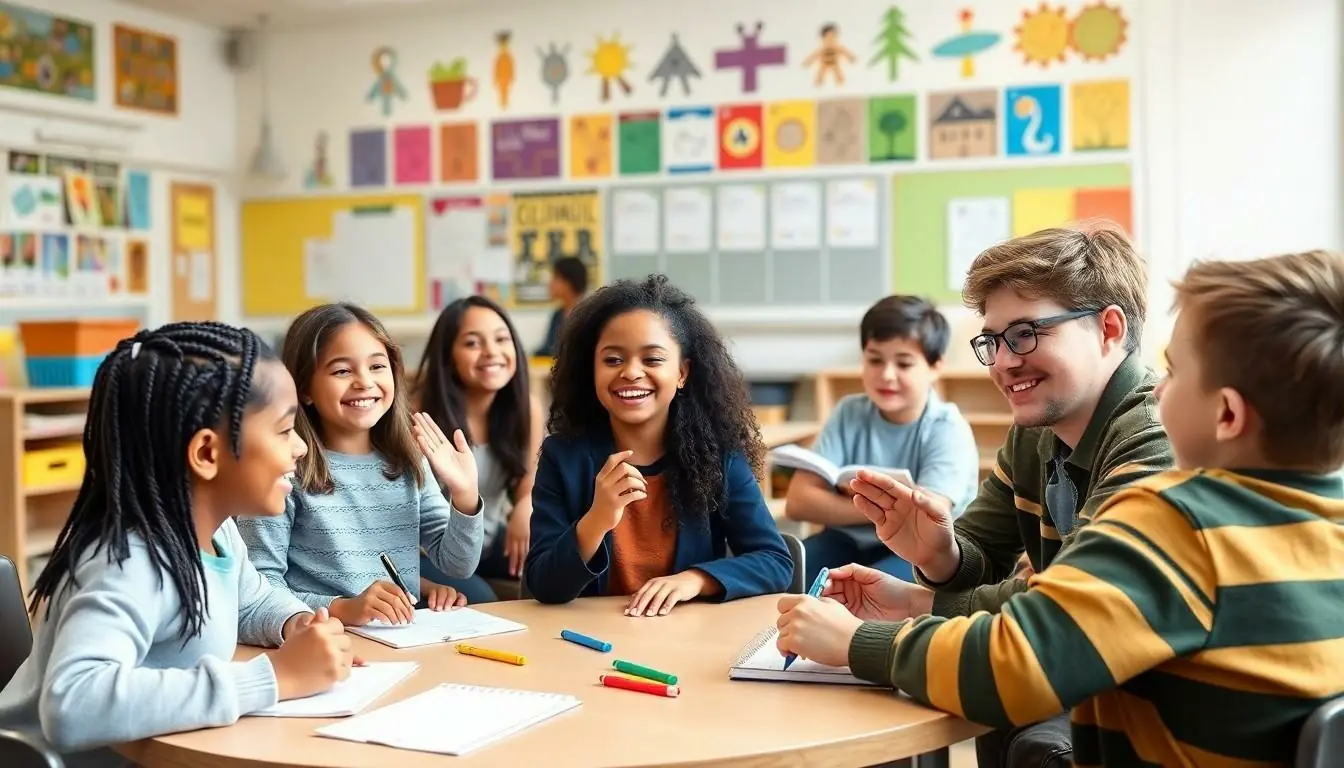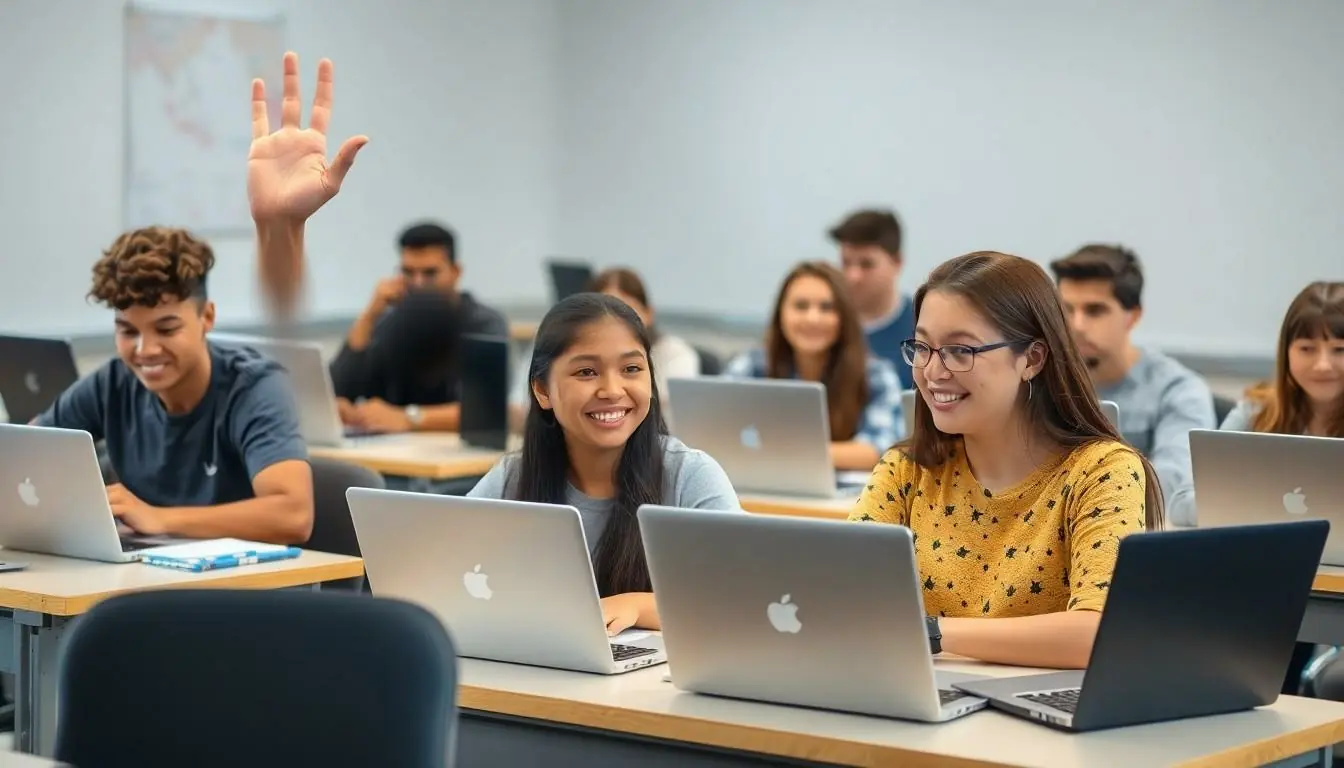In the world of education, feedback is like the secret sauce that can turn a mediocre dish into a gourmet meal. Teachers often pour their hearts into lessons, but without honest student feedback, they might as well be throwing spaghetti at the wall to see what sticks. Imagine a classroom where students feel empowered to share their thoughts—it’s a win-win for everyone involved!
When students voice their opinions, teachers gain invaluable insights that can transform their teaching methods. It’s not just about grades; it’s about creating an engaging learning environment where both students and teachers thrive. So, let’s dive into the delightful chaos of student feedback and discover how it can elevate the educational experience to new heights. After all, who wouldn’t want a classroom where laughter and learning go hand in hand?
Table of Contents
ToggleUnderstanding Student Feedback for Teachers
Student feedback serves as a crucial tool for enhancing educational effectiveness. Gathering insights from learners fosters improvements in teaching and learning experiences.
Importance of Feedback in Education
Feedback plays a vital role in education by providing teachers with direct insights into their teaching methods. Understanding student perspectives helps identify strengths and areas needing improvement. Feedback promotes communication between teachers and students, creating an inclusive classroom atmosphere. Engaged students contribute to a more dynamic learning environment, fostering relationships that enhance overall student achievement. Additionally, regular feedback can guide curriculum adjustments, ensuring it meets students’ needs effectively.
Types of Student Feedback
Various forms of student feedback exist, each offering unique benefits. Formal feedback includes surveys, assessments, and evaluations to gather structured responses. Informal feedback, such as classroom discussions and one-on-one interactions, allows students to express their thoughts in real-time. Peer feedback enables students to reflect on each other’s work, encouraging a collaborative learning experience. Written feedback, via comment cards or journals, captures students’ sentiments and suggestions over time. Collectively, these feedback types enrich the teaching process, enabling educators to tailor their approaches for better outcomes.
Methods for Collecting Student Feedback
Effective feedback collection enhances teaching methods. Various strategies, like surveys and open-ended responses, foster communication between teachers and students.
Surveys and Questionnaires
Surveys present a structured approach to gather student feedback. Teachers often utilize online platforms, allowing students to access them easily. Closed-ended questions yield quantitative data, providing clear insights into student satisfaction and engagement levels. Examples include rating scales and multiple-choice queries. As a result, this method quantifies student opinions effectively, making it easier for teachers to analyze trends over time. Additionally, using anonymous surveys encourages honest responses, further enhancing the quality of feedback received.
Open-Ended Responses
Open-ended responses allow students to express thoughts freely. Teachers encourage students to share their experiences and suggestions in their own words. This qualitative feedback often uncovers specific areas for improvement not addressed in surveys. Students can provide context-rich details on what works or doesn’t in the classroom. For instance, they might discuss teaching styles or suggest activities. Enabling this format fosters a deeper connection between students and teachers, creating a trustful atmosphere that promotes engagement and improvement.
Analyzing Student Feedback
Effective feedback analysis provides teachers with essential insights into their teaching practices. It helps improve the educational experience for all students.
Identifying Patterns and Trends
Recognizing patterns in student feedback reveals common strengths and weaknesses in teaching methods. Teachers can categorize feedback from surveys and discussions, simplifying the identification of recurring themes. Trends in student satisfaction ratings indicate which approaches resonate or falter. Specific comments often highlight areas needing attention, guiding teachers to focus on particular challenges. Educators can also track changes over time, assessing how adjustments impact student perceptions. Regularly analyzing feedback not only fosters reflective practices but promotes a culture of continuous improvement.
Implementing Changes Based on Feedback
Implementing feedback effectively enhances the learning environment. Teachers can prioritize key areas identified through student comments or survey results. Specific interventions, like adjusting lesson plans or incorporating new teaching tools, can address concerns raised by students. Open conversations about adjustments often encourage student buy-in, fostering a collaborative atmosphere. Tracking the results of these changes allows for ongoing refinement and adaptation. Enhancements made in response to feedback demonstrate teachers’ commitment to student success, further building trust in the classroom.
Best Practices for Using Student Feedback
Creating a supportive atmosphere for feedback encourages students to share their thoughts openly. Teachers can start by establishing trust, ensuring students feel safe expressing their opinions. Classroom decor can reflect a positive and inclusive environment, making students comfortable during discussions. Encouraging regular discussions reinforces the importance of feedback, emphasizing its value in enhancing learning experiences.
Establishing a continuous feedback loop strengthens the relationship between students and teachers. Regular check-ins can serve as opportunities for students to share their insights on teaching methods and learning materials. Teachers can schedule brief surveys or informal conversations at the end of each unit, allowing for timely reflections. Keeping an open-door policy invites students to voice their concerns and suggestions at any time. Iterating on feedback consistently will show students their opinions matter, fostering greater engagement in their education.
Conclusion
Embracing student feedback is essential for fostering a dynamic and effective learning environment. When teachers actively seek and implement feedback, they not only enhance their teaching practices but also empower students to take ownership of their education. This collaborative approach nurtures trust and respect in the classroom, leading to improved student engagement and achievement.
Creating a culture where feedback is valued encourages open communication and continuous improvement. As teachers adapt their methods based on student insights, they demonstrate a commitment to meeting diverse learning needs. Ultimately, prioritizing student feedback enriches the educational experience for everyone involved, paving the way for a more vibrant and successful learning journey.





